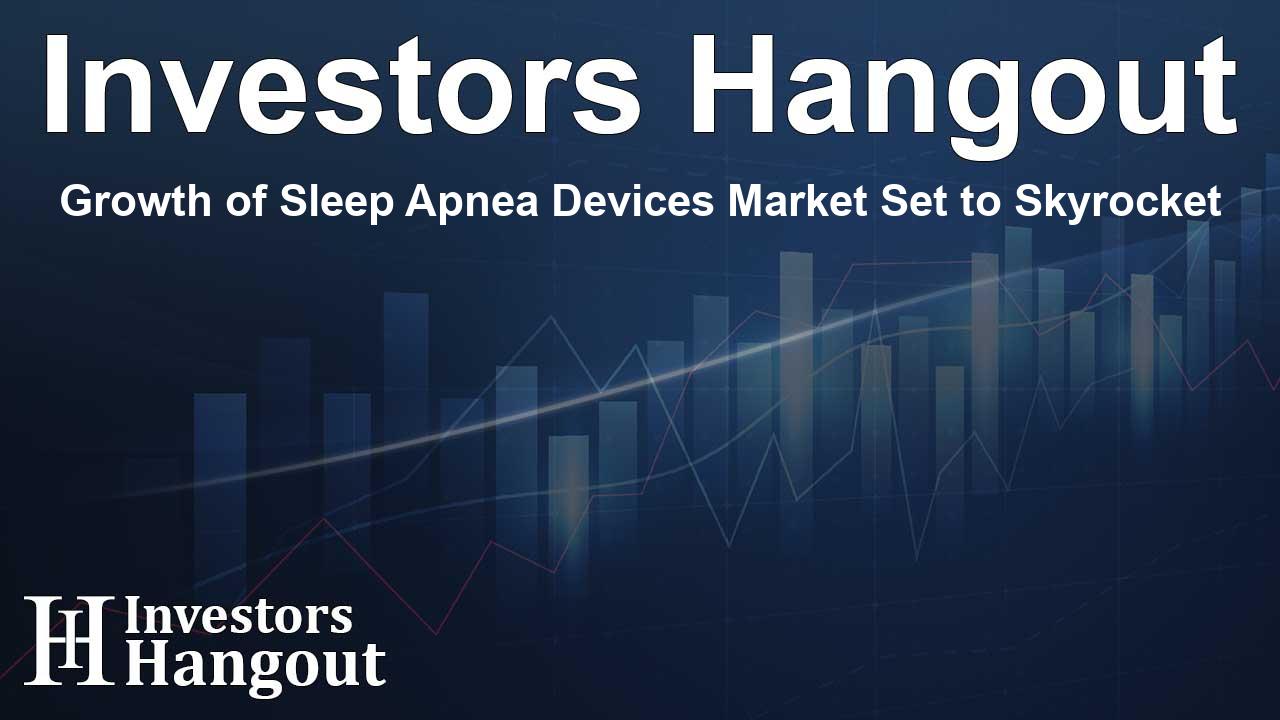Growth of Sleep Apnea Devices Market Set to Skyrocket

Unraveling the Future of Sleep Apnea Devices Market
The global sleep apnea devices market is on the brink of significant growth, anticipated to reach a staggering $11.6 billion by 2032, propelled by a robust compound annual growth rate (CAGR) of 7.6%. This remarkable progression stems from various technological advancements, which are reshaping healthcare delivery and patient management.
The Rise of Telemedicine in Sleep Apnea Care
One of the most pivotal catalysts driving this market is the increasing integration of telemedicine, mobile health (mHealth), and artificial intelligence in diagnostic and therapeutic processes. With technological innovations, healthcare providers can now monitor and manage sleep apnea conditions remotely. These advancements not only enhance patient comfort but also provide more accessible healthcare solutions.
Growing Acceptance of Home-Based Treatments
There's a noticeable shift towards home care settings where patients can manage their sleep conditions without needing to visit specialized centers. This trend reflects a growing preference for at-home solutions, allowing patients the comfort of treatment in a familiar environment, which in turn promotes better adherence to therapy.
Product Segmentation in the Sleep Apnea Market
The sleep apnea devices market comprises primarily two segments: therapeutic devices and diagnostic devices. Therapeutic devices hold the largest market share, attributed to ongoing innovations that enhance comfort and user experience. Leading companies in this segment include ResMed, Koninklijke Philips N.V., and Fisher & Paykel Healthcare Limited, all of which are making significant contributions to sleep health innovations.
Impact of Various End Users on Market Dynamics
The market is primarily segmented into hospitals, home care settings, sleep clinics, and ambulatory care centers. As the focus shifts to home care settings, individual users are becoming the predominant patient group for sleep apnea management. This transition encourages companies to develop user-friendly devices that fit seamlessly into patients’ daily lives.
Geographical Trends Shaping the Landscape
The global landscape of sleep apnea devices reveals significant regional variations. Among the various regions, North America has emerged as a frontrunner in the market, attributed to heightened public awareness about sleep apnea and an increased focus on health management. High access to advanced diagnostic technologies assists healthcare providers in effectively identifying sleep apnea and recommending appropriate treatment options.
Significance of Reimbursement Policies
Furthermore, favorable reimbursement policies are vital in North America, providing financial support to patients seeking treatments. Insurance coverage for sleep apnea devices encourages more people to invest in their health, fostering an environment of greater product adoption.
Market Players and Their Innovations
In this vibrant market, several players stand out due to their innovative approaches. ResMed continues to capture a significant share, focusing on cutting-edge therapeutic solutions that cater to patient needs.
Innovative Strategies of Key Players
Koninklijke Philips N.V. has made strides in the market with its user-centered products aimed at improving sleep quality for those with apnea. Fisher & Paykel Healthcare Limited is noted for its commitment to enhancing patient comfort through advanced humidification systems and mask technologies that optimize therapy effectiveness and satisfaction.
Future Prospects for Sleep Apnea Devices
The future of the sleep apnea devices market looks promising as emerging technologies and strategies continue to foster growth. Companies are focusing not only on product development but also on enhancing the overall customer experience for patients. The ongoing investment in research and development is expected to yield even more innovative solutions, reinforcing the market's upward trajectory.
Frequently Asked Questions
1. What is the projected worth of the sleep apnea devices market by 2032?
The market is expected to reach approximately $11.6 billion by 2032.
2. What factors are contributing to the growth of this market?
Key factors include advancements in telemedicine, improvements in product comfort, and a shift towards home care management.
3. What are the main product types in the sleep apnea devices market?
The market is mainly divided into therapeutic devices and diagnostic devices, with therapeutic devices holding a larger share.
4. Which regions are leading in the sleep apnea devices market?
North America is currently the leading market due to high public awareness and accessibility to advanced technologies.
5. Who are some of the key players in the market?
Prominent companies include ResMed, Koninklijke Philips N.V., and Fisher & Paykel Healthcare Limited, known for their innovative product offerings.
About The Author
Contact Owen Jenkins privately here. Or send an email with ATTN: Owen Jenkins as the subject to contact@investorshangout.com.
About Investors Hangout
Investors Hangout is a leading online stock forum for financial discussion and learning, offering a wide range of free tools and resources. It draws in traders of all levels, who exchange market knowledge, investigate trading tactics, and keep an eye on industry developments in real time. Featuring financial articles, stock message boards, quotes, charts, company profiles, and live news updates. Through cooperative learning and a wealth of informational resources, it helps users from novices creating their first portfolios to experts honing their techniques. Join Investors Hangout today: https://investorshangout.com/
The content of this article is based on factual, publicly available information and does not represent legal, financial, or investment advice. Investors Hangout does not offer financial advice, and the author is not a licensed financial advisor. Consult a qualified advisor before making any financial or investment decisions based on this article. This article should not be considered advice to purchase, sell, or hold any securities or other investments. If any of the material provided here is inaccurate, please contact us for corrections.
